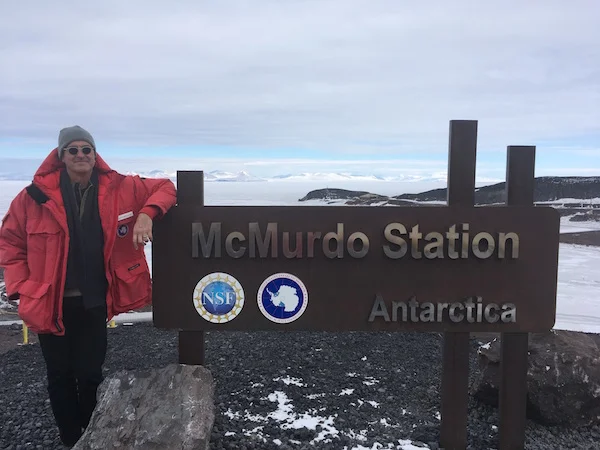The first experience of being on McMurdo station is overwhelming.
First of all, there’s “I’m in Antarctica! OMFG!!!!!!!”
The view from Arrival Heights over the whole of Mactown and out onto the McMurdo Ice Shelf.
Next, there’s a whole new town full of 850 people to get to know. And to help in this regard the USAP (US Antarctic Program) has a host of people waiting to introduce you to the base. After an 8-hour flight in a Herc and then the awe of being in Antarctica, a lot of the initial introductions goes straight over your head. But some fragments stick and then those fragments glom onto other fragments and pretty quickly McMurdo starts to feel like home.
The base is cozy. Everyone is friendly and interested in what you’re doing. It’s a bit like artist’s summer school (Anderson Ranch, Penland, etc.) - if it was run by the military.
This is the galley where we eat every day. The food is excellent with a huge range of options. No penguin roasts unfortunately.
There are lots of interesting buildings and hidden gems that you really need to search for. I’ll post more later but here’s a quick sampling.
The General Hospital
The Coffee House. Where some serious competition cribbage goes down.
The Sundial/Compass
This shows the actual south (S) as well as the compass south (CS) and then the magnetic South (MS) which is where the magnetic south poles lies, but which is actually north(ish) of McMurdo - somewhat confusing. Also compass needles stick to the compass here because they want to point almost vertically down. So the clock face is really helpful to tell directions 24 hours a day. If you really care you can read more here - https://earthref.org/ERESE/projects/GOLF182/reports/report-compass-confusion.htm
For the first few days everyone goes through an intensive training regime tailored specifically to where you are going to deploy. Mine was fairly simple as I’m not going to spend weeks camping in the deep field or scaling Mt. Erebus - unfortunately! I just needed to get the general station orientation, the regular vehicle training, the snowmobile training, the emergency survival training, the outdoor safety training, and have a snowmobile and vehicle shakedown. Once that was down I was free to start enjoying myself!!!
My home base has been the wonderful Crary Lab where all the hard science happens. As a PI (Principal Investigator) I even have my own office! The sprawling lab cascades down three levels and has its own fascinating natural history museum as well as a great seawater lab where they can keep the sub-ice and benthic fauna samples alive while they examine them.
They even have a kind of petting zoo of the more resilient creatures. Like this giant sea spider or pycnogonid!
Lots of aquatic creatures demonstrate gigantism in Antarctic waters. The reason for this is still under research but many scientists consider it to be a result of the extra oxygen that can dissolve in near freezing waters enabling evolution of a larger body size.
I also got to see my first Penguin at Crary Lab. There might be some gigantism developing here too!
Maybe it’s time I venture further off-station and see some wildlife in the field before I head to the lifeless South Pole.











